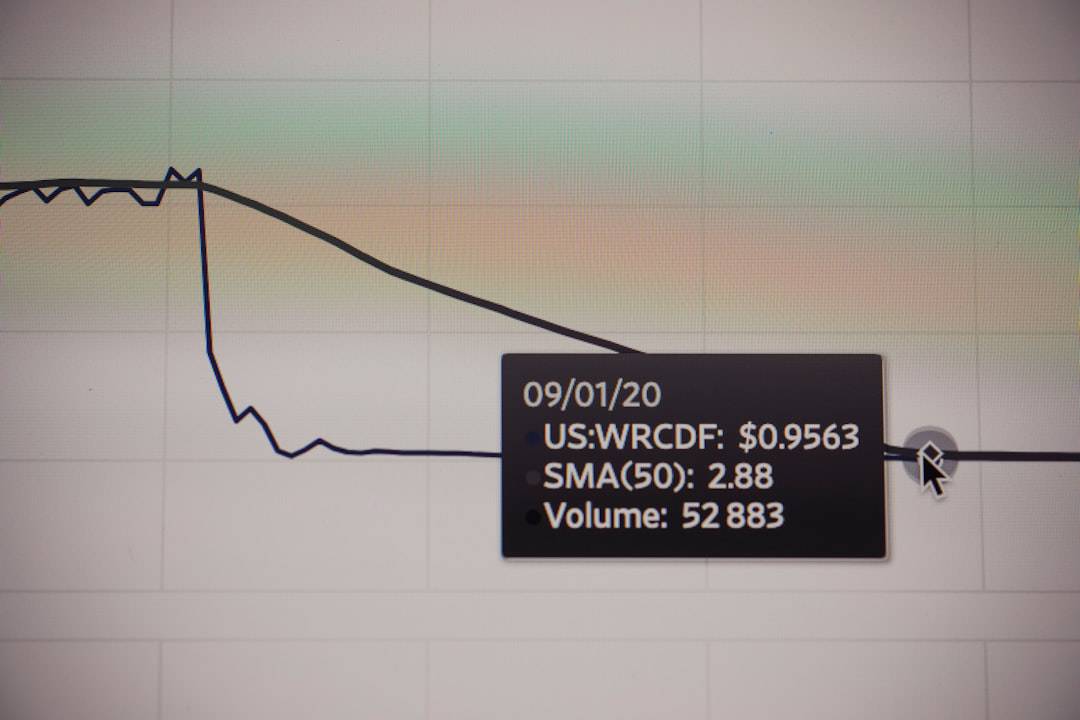Zero Trust Network Access (ZTNA) is a security model that verifies and authenticates every user and device attempting to access a network. This approach is founded on the principle of “never trust, always verify,” meaning no user or device is trusted by default, regardless of location or network environment. ZTNA focuses on securing access to applications and resources, rather than relying on traditional perimeter-based security models.
ZTNA utilizes various technologies including identity and access management (IAM), multi-factor authentication (MFA), encryption, and micro-segmentation to enforce strict access controls and reduce the attack surface. This approach helps organizations minimize the risk of unauthorized access, data breaches, and lateral movement of threats within their networks. ZTNA is particularly important in today’s business landscape, where remote work and cloud-based applications are prevalent, making traditional perimeter-based security measures insufficient for protecting sensitive data and critical assets.
Implementing ZTNA requires a thorough understanding of an organization’s network infrastructure, user behavior, and security requirements. It involves deploying a combination of technologies and policies to ensure access to resources is granted based on the principle of least privilege, where users receive only the minimum level of access necessary to perform their tasks. By adopting ZTNA, organizations can create a more secure and agile network environment that is better equipped to address evolving threats and meet the demands of modern business operations.
Key Takeaways
- Zero Trust Network Access (ZTNA) is a security model that eliminates the idea of trust based on network location and instead requires verification for every user and device trying to access resources.
- Implementing Netskope ZTNA can lead to improved security, reduced attack surface, and better visibility and control over network access.
- Netskope ZTNA enhances security by providing secure access to applications, reducing the risk of data breaches, and enabling granular policy controls.
- Best practices for maximizing security with Netskope ZTNA include implementing strong authentication methods, regularly updating policies, and continuously monitoring and analyzing network traffic.
- Integrating Netskope ZTNA with existing security measures can lead to a more comprehensive and layered security approach, providing better protection against evolving threats.
- Overcoming challenges in implementing Netskope ZTNA may involve addressing user resistance, ensuring compatibility with existing infrastructure, and providing adequate training and support for administrators and users.
- Future trends in ZTNA include the increasing adoption of cloud-based security solutions and Netskope’s role in providing innovative and scalable ZTNA solutions to meet evolving security needs.
The Benefits of Implementing Netskope ZTNA
Netskope ZTNA offers several key benefits for organizations looking to enhance their security posture and enable secure access to applications and resources. One of the primary benefits of implementing Netskope ZTNA is the ability to enforce granular access controls based on user identity, device posture, and contextual factors such as location and time of access. This ensures that only authorized users with compliant devices can access specific applications and data, reducing the risk of unauthorized access and data breaches.
Another significant benefit of Netskope ZTNA is its ability to provide secure access to cloud-based applications and resources, regardless of the user’s location or network environment. This is particularly important in today’s distributed workforce, where employees may need to access critical business applications from various locations and devices. Netskope ZTNA enables organizations to extend their security perimeter to encompass all users and devices, regardless of their physical location, thereby ensuring consistent security enforcement across the entire network.
Furthermore, Netskope ZTNA offers visibility and control over all user activities and data transfers, allowing organizations to monitor and enforce security policies in real-time. This level of visibility is crucial for detecting and mitigating potential security threats, as well as ensuring compliance with industry regulations and data protection standards. By implementing Netskope ZTNA, organizations can achieve a more robust security posture that aligns with the principles of Zero Trust Network Access, thereby reducing the risk of data breaches and unauthorized access.
How Netskope ZTNA Enhances Security

Netskope ZTNA enhances security by providing a comprehensive set of capabilities that enable organizations to enforce strict access controls, monitor user activities, and protect sensitive data from unauthorized access. One way in which Netskope ZTNA enhances security is through its support for multi-factor authentication (MFA), which adds an extra layer of verification to the access process, reducing the risk of unauthorized access due to compromised credentials. By requiring users to provide multiple forms of authentication, such as a password and a one-time passcode sent to their mobile device, Netskope ZTNA strengthens the overall security posture of an organization.
Additionally, Netskope ZTNA leverages advanced encryption techniques to secure data transfers between users and applications, ensuring that sensitive information remains protected from interception or unauthorized access. This is particularly important for organizations that handle sensitive customer data or proprietary information, as it helps prevent data breaches and unauthorized exfiltration of critical assets. By encrypting data in transit and at rest, Netskope ZTNA helps organizations maintain the confidentiality and integrity of their data, even in complex multi-cloud environments.
Furthermore, Netskope ZTNA provides real-time visibility into user activities and data transfers, allowing organizations to detect and respond to potential security threats proactively. By monitoring user behavior and enforcing security policies in real-time, Netskope ZTNA helps organizations identify anomalous activities and potential indicators of compromise, enabling them to take immediate action to mitigate security risks. This level of visibility and control is essential for maintaining a secure network environment that aligns with the principles of Zero Trust Network Access.
Best Practices for Maximizing Security with Netskope ZTNA
| Best Practices | Metrics |
|---|---|
| Implementing Zero Trust Network Access (ZTNA) | Reduction in unauthorized access attempts |
| Enforcing strict access controls | Decrease in data breaches |
| Continuous monitoring and auditing | Improvement in security posture |
| Integration with multi-factor authentication | Reduction in successful phishing attacks |
To maximize security with Netskope ZTNA, organizations should follow a set of best practices that ensure the effective implementation and ongoing management of the solution. One best practice for maximizing security with Netskope ZTNA is to conduct a thorough assessment of the organization’s network infrastructure, user behavior, and security requirements before deploying the solution. This assessment should include an inventory of all applications and resources that need to be protected, as well as an analysis of user access patterns and potential security risks.
By understanding the organization’s specific security needs, organizations can tailor their implementation of Netskope ZTNA to effectively address their unique challenges and requirements. Another best practice for maximizing security with Netskope ZTNA is to implement strict access controls based on the principle of least privilege, where users are only granted access to the resources necessary for performing their tasks. This approach minimizes the attack surface and reduces the risk of unauthorized access or lateral movement of threats within the network.
By enforcing granular access controls, organizations can ensure that only authorized users with compliant devices can access specific applications and data, thereby reducing the risk of data breaches and insider threats. Furthermore, organizations should regularly review and update their security policies and configurations within Netskope ZTNA to align with evolving security threats and compliance requirements. This includes regularly reviewing user access permissions, updating encryption protocols, and monitoring user activities for potential indicators of compromise.
By staying proactive in managing their Netskope ZTNA deployment, organizations can maintain a robust security posture that effectively mitigates potential security risks and aligns with the principles of Zero Trust Network Access.
Integrating Netskope ZTNA with Existing Security Measures
Integrating Netskope ZTNA with existing security measures is crucial for ensuring a comprehensive and cohesive security posture that effectively mitigates potential threats across the entire network environment. One way to integrate Netskope ZTNA with existing security measures is to leverage its support for industry-standard protocols such as SAML (Security Assertion Markup Language) and OAuth (Open Authorization) for seamless integration with identity and access management (IAM) solutions. By integrating Netskope ZTNA with IAM platforms, organizations can ensure consistent user authentication and access controls across all applications and resources, regardless of their location or network environment.
Another way to integrate Netskope ZTNA with existing security measures is to leverage its APIs (Application Programming Interfaces) for integration with other security solutions such as SIEM (Security Information and Event Management) platforms and endpoint protection solutions. By integrating Netskope ZTNA with SIEM platforms, organizations can centralize their security event monitoring and response capabilities, enabling them to detect and respond to potential security threats more effectively. Similarly, by integrating Netskope ZTNA with endpoint protection solutions, organizations can ensure that all devices accessing the network meet compliance requirements and are free from potential malware or vulnerabilities.
Furthermore, organizations should consider integrating Netskope ZTNA with their cloud security posture management (CSPM) solutions to ensure consistent security enforcement across all cloud-based applications and resources. By integrating Netskope ZTNA with CSPM platforms, organizations can gain visibility into potential misconfigurations or security risks within their cloud environments, enabling them to take proactive measures to mitigate potential threats. By integrating Netskope ZTNA with existing security measures, organizations can achieve a more cohesive and effective security posture that aligns with the principles of Zero Trust Network Access.
Overcoming Challenges in Implementing Netskope ZTNA

While implementing Netskope ZTNA offers significant benefits for enhancing security, organizations may encounter several challenges during the deployment and ongoing management of the solution. One common challenge in implementing Netskope ZTNA is ensuring seamless user experience while enforcing strict access controls based on the principle of least privilege. Organizations must strike a balance between providing a frictionless user experience and maintaining robust security enforcement to ensure that users can access the resources they need without unnecessary barriers while minimizing the risk of unauthorized access or data breaches.
Another challenge in implementing Netskope ZTNA is managing the complexity of securing access to cloud-based applications and resources across multiple environments. Organizations often struggle with ensuring consistent security enforcement across various cloud platforms while maintaining visibility into user activities and data transfers. This challenge requires organizations to develop a comprehensive strategy for securing multi-cloud environments while leveraging Netskope ZTNA’s capabilities for enforcing granular access controls and monitoring user activities in real-time.
Furthermore, organizations may face challenges in integrating Netskope ZTNA with existing security measures such as IAM solutions, SIEM platforms, and endpoint protection solutions. Ensuring seamless integration between Netskope ZTNA and other security solutions requires careful planning and coordination to ensure that all components work together cohesively to provide comprehensive security enforcement across the entire network environment. Overcoming these challenges requires organizations to develop a clear roadmap for implementing Netskope ZTNA while addressing potential integration complexities effectively.
Future Trends in ZTNA and Netskope’s Role
Looking ahead, future trends in Zero Trust Network Access (ZTNA) are expected to focus on enhancing user experience while maintaining robust security enforcement across distributed network environments. As remote work becomes more prevalent, organizations will need to prioritize solutions that enable seamless access to critical applications and resources while minimizing the risk of unauthorized access or data breaches. Netskope is poised to play a significant role in shaping these future trends by continuing to innovate its ZTNA solution to address evolving security challenges effectively.
One future trend in ZTNA is the integration of artificial intelligence (AI) and machine learning (ML) capabilities into ZTNA solutions to enable more proactive threat detection and response. By leveraging AI and ML technologies, Netskope can enhance its ZTNA solution’s ability to detect potential indicators of compromise in real-time while automating response actions to mitigate potential security threats effectively. This trend aligns with the industry’s shift towards proactive threat detection and response capabilities that enable organizations to stay ahead of potential security risks.
Another future trend in ZTNA is the convergence of ZTNA solutions with secure access service edge (SASE) platforms to provide comprehensive security enforcement across all network edges. As organizations increasingly adopt cloud-based applications and resources, they will need solutions that can provide consistent security enforcement across all network edges while ensuring seamless user experience. Netskope’s role in this trend will involve integrating its ZTNA solution with SASE platforms to provide a unified approach to securing access to applications and resources across distributed network environments.
Furthermore, future trends in ZTNA are expected to focus on enhancing visibility into user activities and data transfers across all network environments while maintaining compliance with industry regulations and data protection standards. Netskope’s role in shaping these trends will involve developing advanced capabilities for monitoring user behavior in real-time while providing comprehensive visibility into potential security risks across all network edges. By staying at the forefront of these future trends in ZTNA, Netskope can continue to play a pivotal role in enabling organizations to achieve a more secure and agile network environment that aligns with the principles of Zero Trust Network Access.
If you’re interested in learning more about the potential impact of the metaverse on different industries, you should check out this article on metaverse and industries healthcare and wellness. It explores how virtual reality and other metaverse technologies could revolutionize the healthcare and wellness sectors. This could be particularly relevant when considering the implementation of secure access to healthcare data through solutions like Netskope ZTNA.
FAQs
What is Netskope ZTNA?
Netskope ZTNA (Zero Trust Network Access) is a cloud-based security solution that provides secure access to private applications, data, and resources without the need for a traditional VPN.
How does Netskope ZTNA work?
Netskope ZTNA uses a zero trust approach to verify the identity of users and devices before granting access to specific applications and resources. It leverages a cloud-native architecture to provide secure access from any location or device.
What are the benefits of using Netskope ZTNA?
Some of the benefits of using Netskope ZTNA include improved security, simplified access management, enhanced user experience, and the ability to enforce granular access controls based on user identity and context.
Is Netskope ZTNA suitable for all types of organizations?
Netskope ZTNA is designed to meet the security and access needs of a wide range of organizations, including enterprises, government agencies, and small to medium-sized businesses.
How does Netskope ZTNA differ from traditional VPNs?
Unlike traditional VPNs, Netskope ZTNA does not provide full network access but instead focuses on providing secure access to specific applications and resources based on the principle of least privilege. It also offers a more user-friendly and scalable approach to access management.











Leave a Reply